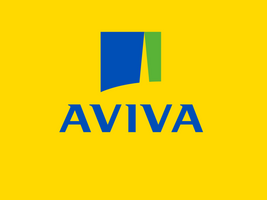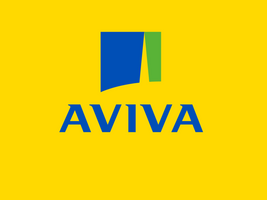Title Page
-
Conducted on
-
Prepared by
-
Location
-
The view our Loss Prevention Standard that supports this checklist, please view the following link: https://connect.avivab2b.co.uk/documents/view/aviva_external_building_areas_-_usage_and_safety_lps.pdf
Planning and Management
-
1. Approval<br><br>Have the following been contacted with full details of the proposals to seek appropriate permissions, obtain suitable guidance and details of any specific risk management requirements or recommendations:<br><br>• Building owner?<br>• Insurance provider?<br>• Insurance broker?<br>• Other bodies as appropriate, including the local authority and emergency authorities?
-
2. Risk Assessment<br><br>Are there up to date:<br>• Fire risk assessment(s)?<br>• Health and safety risk assessment(s)?<br>• Fire safety plan?<br><br>Have the above been undertaken by a competent person?
-
3. Remedial Actions<br><br>Have any action points generated from all completed risk assessments been:<br><br>• Identified?<br>• Prioritised?<br>• Tracked?<br>• Completed?
-
4. Procedures<br><br>Are formal opening, operating and closing procedures in place, with a final inspection undertaken prior to vacating?
-
5. Inspections and Audits<br><br>Are regular inspections and audits undertaken, during and outside external usage areas?<br><br>Are these prioritised, tracked and completed?<br><br>Do these cover:<br><br>• Pre-opening?<br>• Opening?<br>• During open/operational periods?<br>• Closure?<br>• Post-closure?<br><br>Do inspections and audits seek to identify:<br>• Changes that may have taken place which may affect the likelihood of fire, damage, accidents and incidents occurring?<br>• The need for additional control measures?
-
6. Combination of Hazards<br><br>Do risk assessments take into account the combination of individual hazards and exposures, such as fire hazards, with:<br><br>• Combustibility of permanent and temporary structures, and<br>• Combustible contents, and<br>• Decorations?
-
7. Management and Emergency Planning<br><br>• Has a competent person been nominated to assume responsibility for the coordination and management of externally used areas/events?<br>• Has an emergency escalation and action plan been established and communicated to all participants?<br>• Are a suitable number of trained fire marshals or stewards available to respond to an emergency?<br>• Have arrangements been made and communicated, in order to raise the alarm in the event of fire, request the attendance of emergency services and ensure site access?
-
8. Emergency Response & Business Continuity Plan<br><br>Is an Emergency Response Plan with an effective crisis management capability provided?<br><br>Is a Business Continuity Plan (BCP) in place?<br><br>• Have these been tested?<br>• Are these periodically reviewed?
-
9. Near Miss, Incidents, Accidents<br><br>Is there an incident reporting procedure for the recording of all incidents/accidents and near misses involving staff and members of the public?<br><br>Does this include a formal root cause investigation as a means of improving risk management and loss prevention?
-
10. Change Management<br><br>Are formal managing change procedures in place, to:<br><br>• Help identify and manage hazards and exposures which left unchallenged could lead to an incident, damage or loss?<br>• Identify additional risks created as result of changes
-
11. High Risk Activities<br><br>Are the following high-risk fire risk activities prohibited:<br><br>• Use of barbeques?<br>• All forms of cooking?<br>• Use of portable heaters (including electric and gas)?<br>• Use of firepits and chimenea?<br>• Smoking?<br>• Naked flames (candles and oil/paraffin lamps, etc.)?<br><br>Note: Aviva recommends all these activities should be prohibited.
-
12. Permanent and Temporary Structures<br><br>• Do structures meet required fire and safety standards?<br>• Are the structures constructed using non-combustible, fire resistive or retardant materials?<br>• Are structures in sound condition, fit for purpose and of a suitable strength and stability?<br>• Are structures securely and safely affixed, allowing for adverse weather conditions?
-
13. Combustible Floor Coverings, Contents and Decorations<br><br>• Do materials used in finishing and furnishing meet required fire and safety standards, including floor coverings such as astro turf/artificial grass?<br>• Has the volume of combustible contents and materials been assessed and reduced so far as practicable?<br>• Are combustible items stored well away from ignition sources?<br>• Are non-secured contents and decorations kept to a minimum and arrangements in place for these to be easily removed and safely stored when adverse weather is forecast, and also when the external area is not in use?
-
14. Fire Protection Automatic Sprinkler Protection<br><br>Where the existing building is protected by automatic sprinklers, has the need for extension of the sprinkler system been assessed by:<br><br>• A fire risk engineer?<br>• A sprinkler installer?<br>• Your insurance provider? <br><br>to determine whether the system requires extension to the external area, any enclosure or partially enclosed structure, for life safety, loss prevention and property insurance purposes?
-
15. Fire Detection Fire Alarm<br><br>Where partial, substantial or fully enclosed building structures have been created, has the need for manual and automatic fire detection and alarm systems been assessed, by:<br><br>• A fire risk engineer?<br>• A fire alarm installer?<br>• Your insurance provider?<br><br>to determine whether the system requires extension for life safety, loss prevention and property insurance purposes?
-
16. General Fire Safety<br><br>• Have an adequate number of suitable and maintained portable fire extinguishers and fire blankets been provided?<br>• Are there a suitable number of persons trained in the use of fire safety equipment?<br>• Are existing fire exit routes sufficient, clearly signed and clear of obstructions, combustible materials and fire hazards?
-
17. Public Fire Brigade<br><br>• Has the fire brigade been informed of the proposals throughout its development?<br>• Is the area easily accessible to firefighters?<br>• Is there a readily available and adequate supply of water
-
18. Waste Management<br><br>• Have suitable arrangements been made for the regular collection, safe storage and disposal of waste materials?<br>• Are arrangements in place to prevent waste materials accumulating in and around designated smoking areas, heaters, electrical and any permitted cooking appliances?<br>• Are suitable arrangements and controls in place for the safe storage and cooling down of hazardous waste such as waste fats, oils and charcoal prior to removal from site for disposal (where cooking is permitted)?
-
19. Electricity Supply<br><br>Are permanent fixed external electrical power supplies:<br><br>• Installed and inspected at regular intervals by an approved contractor, who is a member of an appropriate UKAS nationally accredited third-party inspection body for companies able to carry out work in accordance with the IEE regulations?<br>• Checked for damage prior to each use and repaired or replaced before being permitted to be used?<br>• Provided with safety devices to protect against short circuit and earth fault currents (circuit breakers), electrocution and fire caused by earth faults (RCDs) and fire caused by arcing (Arc Fault Detection Devices)?<br>• Suitable for external use?<br>• Contained within protective conduit to prevent damage?<br>• Checked to ensure power supplies are not overloaded, and not used together with multiple adaptors/joint blocks?<br>• Inspected using a thermographic camera?
-
20. Portable Generators<br>Is the use of portable generators prohibited?
-
21. Electrical Equipment and Power Cables<br><br>Are electrical items including cables and connections to access power supplies:<br><br>• Suitable for external use?<br>• Visually inspected prior to opening, daily?<br>• Subject to Portable Appliance Testing (PAT)?<br>• Containing light fittings which are fitted with protective safety guards, maintained in a good condition and kept clear of combustible items?<br>• Containing cables which are kept as short as possible, protected against physical damage and do not present tripping or entanglement hazards?<br>• Checked to ensure compliance with prohibited use of extension leads, multiple adaptors and joining blocks?<br>• Inspected using a thermographic camera?
-
22. Heating Portable<br><br>Is the use of portable forms of heating prohibited, including:<br><br>• Electrical heaters?<br>• Gas patio and space heaters?<br>• Gas patio heaters used for decorative features, such as at entrances?<br>• Firepits?<br>• Chimenea, etc.?
-
23. Heating Fixed (Electrical)<br><br>Is fixed electrical heating:<br><br>• Designed for the external use with appropriate IP rating?<br>• Installed and routinely inspected by a competent qualified electrician?<br>• Installed and maintained as per the manufacturer's safety advice, ensuring the minimum clear distance from combustibles is maintained at all times?<br><br>Has the type of heater been selected and located to minimize the risks of fire and injury?
-
24. Weather<br><br>• Is the weather forecast obtained and assessed in advance?<br>• Are suitable measures taken to reflect forecast conditions?<br>• Are there procedures in place ad persons authorised to cancel an event ahead of forecasted adverse weather conditions?<br>• If the weather changes, and if necessary, are plans in place to terminate the event quickly?
-
25. Smoking<br><br>Is smoking prohibited?<br><br>If permitted, is smoking restricted to designated areas, compliant with smoking legislation, free from combustible materials, a safe distance from the building and any combustible materials and provisions made for smoking materials to be safely disposed of?
-
26. Naked Flames<br><br>Is the use of naked flames prohibited, including:<br><br>• Candles tea lights (wax/gel)?<br>• Oil/paraffin/gas lamps and lanterns?<br>• Chafer fuel/chafing units?
-
27. Cooking<br><br>• Is cooking prohibited?<br><br>Where cooking is permitted (other than on balconies, terraces/roof terraces where cooking should be strictly prohibited), are cooking appliances and associated equipment:<br><br>• Purpose built, fit for use, and maintained in good, clean condition?<br>• Subject to regular service and maintenance in accordance with manufacturer's instructions, as part of a preventive maintenance programme?<br>• Installed/connected (gas appliances) by a competent Gas Safe registered engineer? Annually serviced (gas appliances) by a competent Gas Safe registered engineer?<br>• Fitted with appropriate, working safety devices, e.g. thermostatic control and cut-out devices, flame failure cut-out devices, etc.?<br>• Operated only by suitably trained persons?<br>• Kept clear of any combustible materials, including floor surface/decking?<br>• Always attended when in use?
-
28. Provision, Use, Storage and Handling of Fuel<br><br>Are gas cylinders and associated equipment prohibited?<br><br>Where used, are gas cylinders and associated equipment:<br><br>• Operated by persons with appropriate training, experience and competency?<br>• Limited to 1 day usage?<br>• Positioned in a well-ventilated external area, stored in an upright position, on stable ground, caged/secured?<br>• Clear of heat sources and combustible storage?<br>• Gas hoses limited in length, 2 metre maximum for externally positioned hoses and 1 metre for cylinders contained within an enclosure or compartment?<br>• Gas hoses inspected prior to each use, to ensure free from leaks, splits, damage and showing signs of perishing?<br>• Fitted with emergency shut-off valves/regulators which are checked prior to each use?<br>• Not left unattended when in use?<br><br>Is charcoal:<br><br>• Prohibited?<br>• Where used, limited to1 day usage and stock stored suitably and safely?<br>• Wet/damped down and coals allowed to cool sufficiently prior to disposal/removal from site?<br><br>Are flammables, gels, tea light candles and chafer oils:<br><br>• Prohibited?<br>• Where used, limited to 1 day usage and stock stored suitably and safely, within a proprietary metal fire resisting cabinet conforming to BS EN 14470-1 with a fire resistance of at least 30 minutes?<br><br>Is cooking oil:<br><br>• Prohibited?<br>• Where used, limited to 1 day usage and stock stored suitably and safely?<br>• Changed at regular intervals, thereby reducing oxidisation and the risk of fire?<br>• Allowed to cool sufficiently prior to disposal/site removal?<br>• Removed safely and appropriately when used?
-
29. General Public Safety<br><br>• Has the event area been assessed for suitability of usage and maximum number of persons?<br>• Have emergency escape routes and means of raising an alarm been assessed?<br>• Has the event area been assessed for the risks of slips, trips and falls, taking into account condition of floor surfaces, steps/edges, slopes and the added risk of slippery surfaces when wet?<br>• Are trailing leads and cables avoided wherever possible, otherwise secured down and covered with proprietary mats or cable covers?<br>• Are balustrades and edge protection suitable in height, design and strength to prevent falls from height, items being knocked over and climbing?<br><br>Note: 1.10 metre minimum height, with maximum permissible spacing gap of "100mm sphere'.
Completion
-
Additional Comments
-
Completed by (Name and Signature)
-
Please Note:
This document contains general information and guidance only and may be superseded and/or subject to amendment without further notice. Aviva has no liability to any third parties arising our of ARMS' communications whatsoever (including Loss Prevention Standards), and nor shall any third party rely on them. Other than liability which cannot be excluded by law, Aviva shall not be liable to any person for any indirect, special, consequential or other losses or damages of whatsoever kind arising out of access to, or use of, or reliance on anything contained in ARMS' communications. The document may not cover every risk, exposure or hazard that may arise and Aviva recommends that you obtain specific advice relevant to the circumstances.

















